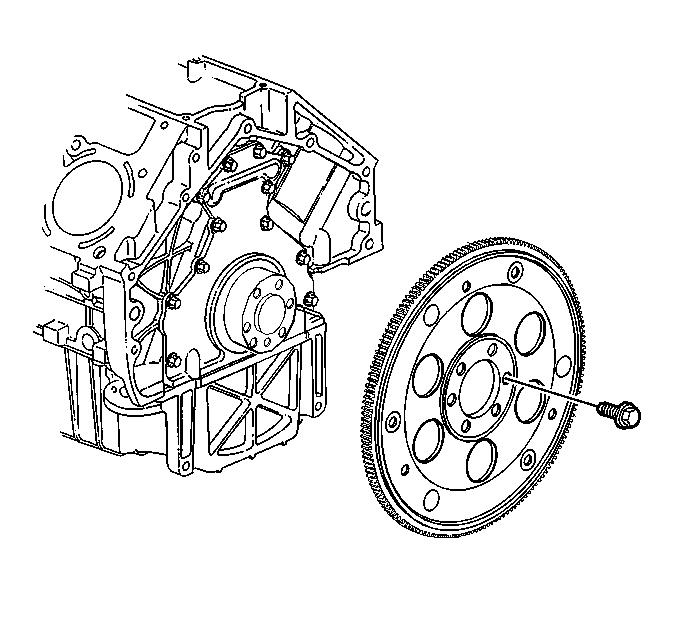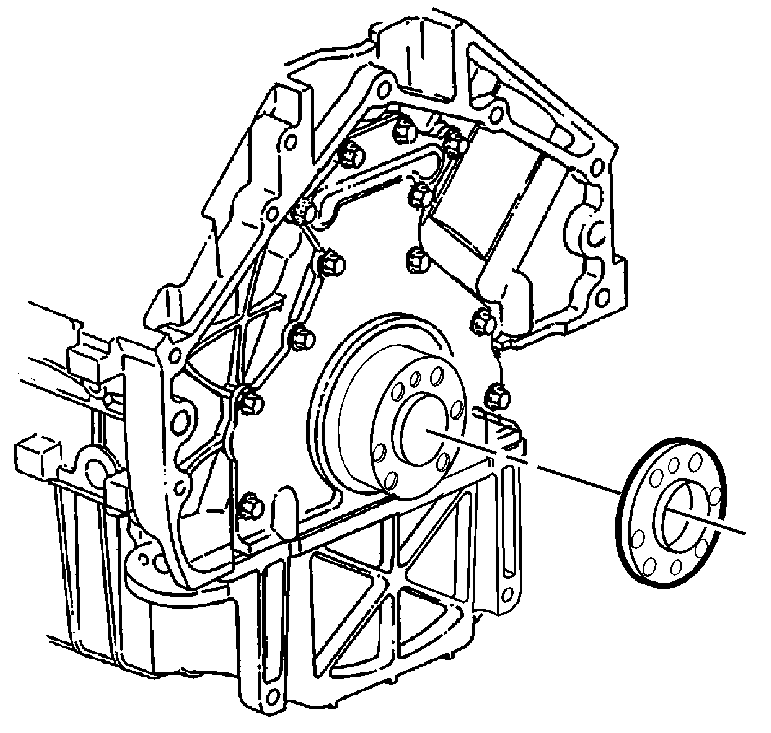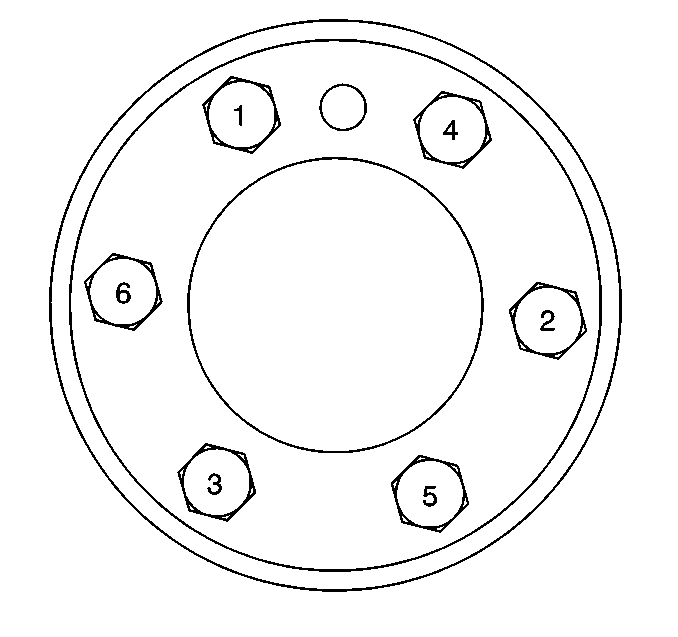Removal Procedure
- Remove the automatic transmission, if equipped. Refer to Transmission Replacement in Automatic Transmission - 4L60-E or Transmission Replacement in Automatic Transmission - 4L80-E.
- Remove the engine flywheel bolts.
- Remove the automatic transmission engine flywheel, if applicable.
- Remove the clutch, if equipped with a manual transmission. Refer to Clutch Assembly Replacement in Clutch.
- Remove the engine flywheel bolts.
- Remove the manual transmission engine flywheel, if applicable.
- If required, clean and inspect the engine flywheel. Refer to Engine Flywheel Cleaning and Inspection .
- Install two M11x1.5 mm bolts (1) to the threaded holes of the spacer, if applicable.
- Rotate the bolts clockwise to remove the spacer.
- Remove the spacer from the rear of the crankshaft, if applicable.

Important: Note the position and direction of the engine flywheel before removal.

Important: Note the position and direction of the engine flywheel before removal.


Installation Procedure
Important:
• The flywheel does not use a locating pin for alignment and will not
initially seat against the crankshaft flange or spacer (if applicable), but will be
pulled onto the crankshaft by the engine flywheel bolts. This procedure requires a
three stage tightening process. • Certain applications (4.8 L manual transmissions or all 6.0 L)
require a spacer and longer bolts for proper flywheel position.
- Install the spacer (if applicable) onto the rear of the crankshaft.
- Install the manual transmission engine flywheel to the crankshaft, if applicable.
- Install the automatic transmission engine flywheel to the crankshaft, if applicable.
- Apply threadlock GM P/N 12345382 (Canadian P/N 10953489), or equivalent to the threads of the flywheel bolts.
- Install the engine flywheel bolts.
- Tighten the bolts a first pass in sequence to 20 N·m (15 lb ft).
- Tighten the bolts a second pass in sequence to 50 N·m (37 lb ft).
- Tighten the bolts a final pass in sequence to 100 N·m (74 lb ft).
- Install the clutch, if equipped with a manual transmission. Refer to Clutch Assembly Replacement in Clutch.
- Install the automatic transmission, if equipped. Refer to Transmission Replacement in Automatic Transmission - 4L60-E or Transmission Replacement in Automatic Transmission - 4L80-E.



Important: Longer flywheel bolts must be used on applications using a flywheel spacer.

Notice: Use the correct fastener in the correct location. Replacement fasteners must be the correct part number for that application. Fasteners requiring replacement or fasteners requiring the use of thread locking compound or sealant are identified in the service procedure. Do not use paints, lubricants, or corrosion inhibitors on fasteners or fastener joint surfaces unless specified. These coatings affect fastener torque and joint clamping force and may damage the fastener. Use the correct tightening sequence and specifications when installing fasteners in order to avoid damage to parts and systems.
Tighten
